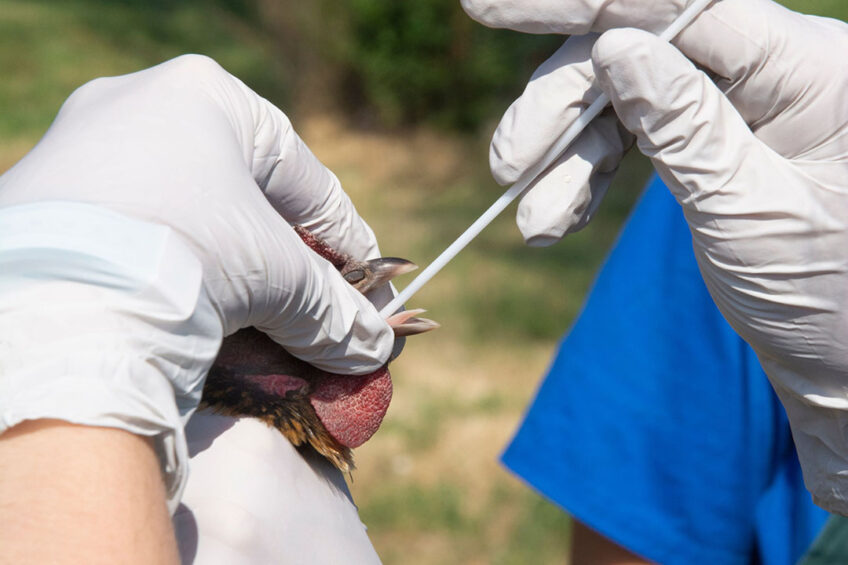Spotlight on economic and public health impacts of bird flu

Knock-on effects from the global avian flu crisis are beginning to have significant effects on multinational poultry companies as they struggle to meet demand.
It is estimated that the avian flu outbreak has results in the loss of 40 million birds and is associated with economic costs ranging from US$2.5 billion to US$3 billion, according to a new investor report from FAIRR.
Mass culling of birds around the world is exacerbating global food price inflations and products, including eggs and chicken ready meals, but there are also material implications for protein producers and companies across the food supply chain with share pieces of some of the world’s largest producer companies being affected.
As an example, Tyson Foods has been struggling to meet consumer demand for poultry, resulting in an operating income loss of US$258 million, although this has been exacerbated by staffing issues in processing plants.
Bird flu infections and implications
The study, ‘Industry Reinfected – Spotlight on the Economic and Public Health Impacts of Avian Flu’, has been produced with the University of Surrey and provides a summary for both policymakers and investors on the avian flue crisis. It looks at the rise in infections globally, the financial and economic implications for the food sector and the potential impact on trade and the global economy and implications.
Importantly, it also provides an analysis of emerging policy recommendations, highlighting the importance of taking a One Health approach to address the disease risk.
As part of this report, the analysis from the University of Surrey found that the stocking density in intensive commercial poultry farming in the UK may provide environmental conditions that facilitate viral transmission, affecting animal welfare and health, as well as causing economic impacts.
Conversely, free-range farming houses fewer chickens per square foot which allows for greater movement of individual birds.
Movement and transmission
By comparing 2 movement scenarios and 2 separate populations of birds, one with intensive conditions and the other in a free-range setting, the case study quantifies the impact that individual bird movement has on the transmission of avian flu. The study found that keeping birds in smaller flocks, where they have increased movement, results in fewer birds dying. This result could be particularly important for implementing disease control strategies, such as moving or quarantining healthy birds, and introducing vaccination intervention in a timely manner so that disease spread could be slowed.
The analysis by FAIR shows that, despite improvements in recent years, amongst the different proteins, the poultry sector has been the worst performer on average over the last 4 years (2019-2022). The poultry sector has consistently performed poorly when compared to the average performance of other protein companies in the areas of waste and pollution and food safety metrics.
Recommendations and advice
The report includes some recommendations to investors:
- They should review the ESC and biosecurity risk in their investee companies’ protein supply chains.
- They should emerge with investee companies to understand their approach to avian flu and other emerging disease risks and encourage an uptick in performance factors such as animal welfare which are relevant to reduce the risks of disease.
- They can use their voice to impress on policymakers the need to enact policy changes for agricultural production to reduce the spread of disease and reduce risk drivers – this could include providing poultry with more space and ending close confinement.
- With the right incentives in place, investors and companies in the animal supply chain can potentially play a role in financing policy measures such as vaccines (e.g., financial resources or incentives are provided by policymakers to invest in vaccine schemes).
- Capacity building programmes will be needed across the supply chains of the largest protein companies to ensure a robust response to disease, such as investments in staff training on biosecurity, disease control and prevention.
Advice to policymakers includes:
- Health and finance ministers attending next year’s 77th World Health Assembly should, in recognition that prevention is often cheaper than response, enact not only shortterm disease control measures such as biosecurity measures in the sector, but also long-term prevention measures to address the drivers of disease.
- Policymakers should consider policy changes that may reduce the spread of diseases or reduce risk drivers, including providing poultry with more space and ending close confinement, as well as promoting smaller farm sizes. This will also reduce financial losses in the event of an outbreak. These changes could be written into trading standards and agreements.
- Policymakers can provide targeted financing, including R&D into vaccines and other disease control solutions, while also supporting farmers with the capital required to address additional disease control mechanisms.
- To reduce the impacts on wildlife and prevent spread of disease between wild birds and poultry, policymakers should consider preventing siting of commercial farms in areas that are populated by large numbers of wild birds such as wetlands.
- Capacity-building programmes are needed to ensure that disease response programmes are implemented based on sound technical knowledge at the farm level. This includes technical knowledge of the importance of biosecurity, hygiene, animal welfare and human occupational health standards.
- As many farmers are dependent on public support, policymakers can incentivise best practices to create a more resilient and sustainable food system that addresses emerging disease risk drivers through repurposing agricultural support programmes.
- Knowledge sharing will be required between stakeholders on best practices including the role of academic research.
- Consideration should also be given to novel approaches for resource mobilisation for risk reduction and prevention. These include insurance measures, solidarity funds, public-private partnerships for R&D, international cooperation and through accreditation schemes such as Red Tractor or RSPCA Assured.












